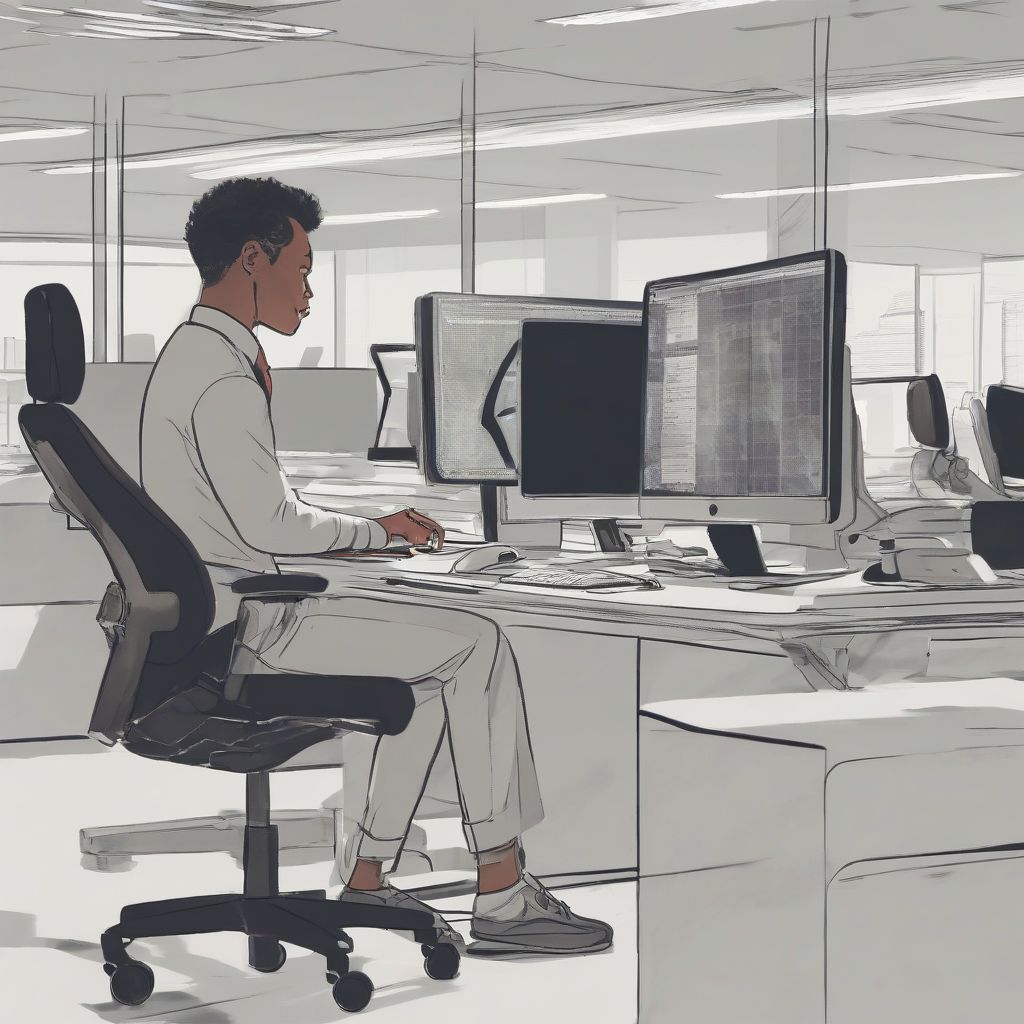Are you one of the millions now working from home? Have you transitioned from a traditional office to the new comfort of your own dedicated workspace? As a nutritionist and meal prep coach, I spend a lot of time focusing on what goes in your body, but what about what your body is leaning on all day? The truth is, working from home can be a game-changer for your productivity, but only if your home office setup supports your physical well-being.
Many people don’t realize that an ergonomically sound workspace is about more than just comfort; it’s about preventing long-term health issues that can arise from poor posture, repetitive strain, and inadequate support. Neck pain, backaches, and carpal tunnel syndrome are just a few of the potential problems you could face. The good news is that creating an ergonomic home office isn’t difficult or expensive. It just takes a little planning and the right information.
The Foundation: Choosing the Right Desk and Chair
Think of your desk and chair as the cornerstones of your ergonomic home office. Getting these two elements right is crucial for setting the stage for a healthy and comfortable work experience.
Ergonomic Chair Essentials
 Ergonomic Office Chair
Ergonomic Office Chair
Let’s start with the most important piece of furniture: your chair. Here’s what to look for:
- Adjustability: A good ergonomic chair allows you to adjust the height so that your feet are flat on the floor, your knees are bent at a 90-degree angle, and your thighs are parallel to the floor.
- Lumbar Support: Lower back support is essential for preventing strain and maintaining good posture. Look for a chair with adjustable lumbar support to fit the natural curve of your spine.
- Armrests: Adjustable armrests can help to reduce strain on your shoulders and neck by providing support while you type and use your mouse.
- Material: Breathability is key, especially if you live in a warmer climate. Mesh backs or breathable fabric can help prevent discomfort and sweating.
For an in-depth look at selecting the perfect ergonomic chair, check out this resource: How to Choose the Best Ergonomic Chair for Your Home Office.
Desk Dynamics: Finding Your Fit
Your desk should complement your chair and provide ample space for your equipment while maintaining a comfortable working posture.
- Height Matters: Whether you choose a standing desk, a traditional desk, or a desk converter, ensure that your screen is at eye level and your elbows are bent at a 90-degree angle when typing.
- Space to Move: Don’t underestimate the importance of desk space. You should have enough room to comfortably arrange your keyboard, mouse, and any other essential items within easy reach.
- Cable Management: Tangled wires are not only unsightly but can also be a tripping hazard. Invest in cable ties, organizers, or a desk with built-in cable management to keep your workspace tidy and safe.
Beyond the Basics: Optimizing Your Workstation Ergonomics
With your desk and chair in place, it’s time to fine-tune your workstation for optimal ergonomics.
Screen Positioning and Lighting
- Eye Level is Key: Your monitor should be positioned directly in front of you, about an arm’s length away. The top of the screen should be at or slightly below eye level.
- Combat Glare: Position your monitor to minimize glare from windows or overhead lights. Consider using an anti-glare screen protector.
- Lighting is Everything: Adequate lighting reduces eye strain. Natural light is best, but a good desk lamp can also provide focused illumination without harsh glare.
Keyboard and Mouse Matters
- Ergonomic Peripherals: Consider investing in an ergonomic keyboard and mouse. These are designed to promote a more natural hand and wrist position, reducing the risk of pain and discomfort.
- Keep It Close: Your keyboard and mouse should be positioned close to your body to avoid reaching and straining.
- Wrist Rests: While optional, wrist rests can provide support and help keep your wrists in a neutral position.
Taking Breaks
Remember to take breaks! Even with the most ergonomic setup, prolonged sitting can be detrimental. Here are some tips:
- The 20-20-20 Rule: Every 20 minutes, look at something 20 feet away for 20 seconds to reduce eye strain.
- Move Regularly: Get up and move around every hour. Take a short walk, stretch, or do some light exercises.
- Stay Hydrated: Keep a water bottle at your desk and sip on it throughout the day.
Ergonomic Accessories for Enhanced Comfort
While the right desk and chair are fundamental, there are some additional accessories that can significantly enhance the ergonomics of your home office:
- Footrest: If your feet don’t comfortably reach the floor, a footrest can improve circulation and reduce pressure on your lower back.
- Monitor Stand: A monitor stand can help you achieve the ideal screen height, especially if your desk is not adjustable.
- Laptop Stand: If you primarily use a laptop, a laptop stand can elevate the screen to a more ergonomic height when paired with an external keyboard and mouse.
- Headset: If you spend a lot of time on the phone, a headset can prevent neck and shoulder strain from cradling the phone between your ear and shoulder.
Creating a Distraction-Free Zone
An ergonomic home office is about more than just physical comfort; it’s also about creating a workspace that supports focus and productivity. To learn how to minimize distractions and create a more productive workspace, check out these tips: How to Create a Workspace that Minimizes Distractions.
The Future of Home Office Ergonomics
The way we work is evolving, and so are the trends in ergonomic design. From smart desks that adjust automatically to innovative seating options, the future of home office ergonomics is exciting. To stay ahead of the curve, take a look at these insights on the evolving landscape of home workspace design:
- The Future of Home Workspace Design in a Hybrid Work Environment
- The Future of Ergonomic Design in Home Offices
Conclusion: Invest in Your Health and Productivity
Creating an ergonomic home office is an investment in your health, well-being, and productivity. By following these tips and making simple adjustments to your workspace, you can create an environment that supports your body and mind. Remember, even small changes can make a big difference in how you feel and how well you work.
Are you ready to take your home office to the next level of comfort and efficiency? Start by assessing your current setup and making gradual changes. Your body will thank you!
[amazon bestseller=”ergonomic office chair”]
